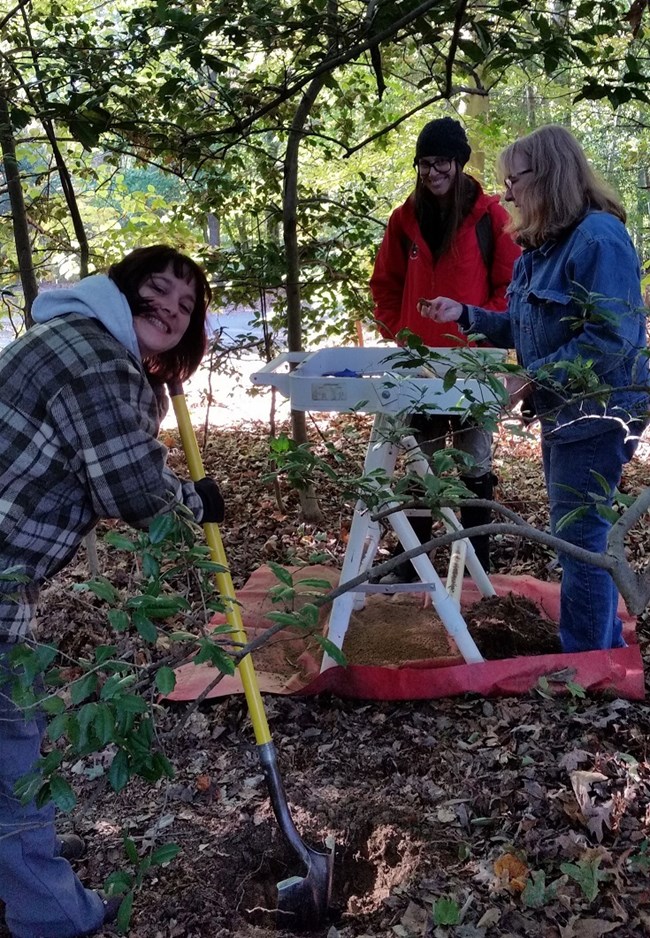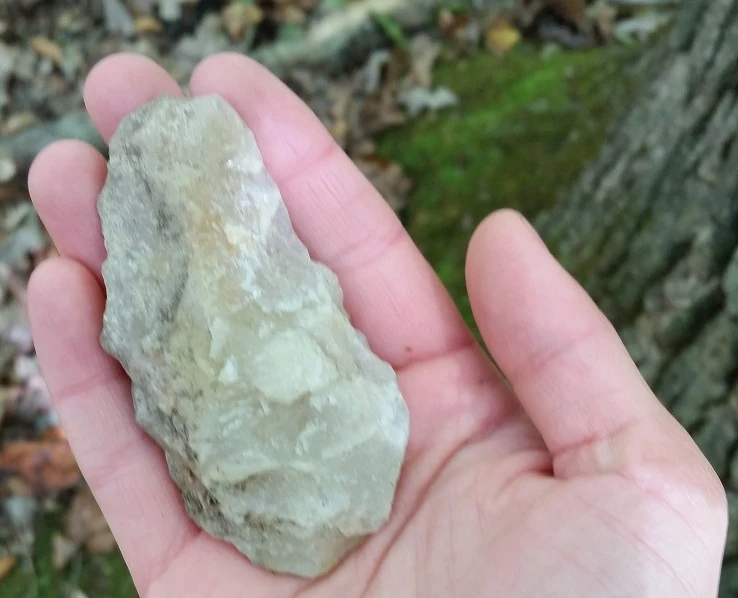Last updated: September 13, 2021
Article
Field Notes: Archeology at Prince William Forest Park

(NPS Photo)
One thing modern visitors to Prince William Forest Park have in common with the first people who used the land more than 11,000 years ago is how we use landscape features like streams and hills to orient ourselves and move through the woods. Often, Native American sites are located on flat, elevated areas near streams, where hunters and campers would have enjoyed dry land and level terrain, access to water, and good visibility. Many sections of trail in the park today follow the same streams and rises, leading hikers over layers of buried history.
Prince William Forest Park was established in 1936 as Chopawamsic Recreational Demonstration Area, but people have used the forest for thousands of years. The park’s earliest inhabitants included Native American hunters and gatherers who camped along both branches of Quantico Creek, hunted in the hills, gathered nuts in the forests, and walked the trails that crossed the ridges. These early people left artifacts and other traces of themselves behind. Stone tools and the fragments discarded during the making of them (flakes and shatter) and little bits and pieces of pottery, give clues of where their makers walked, camped, hunted, and gathered foods.
Protecting cultural heritage is part of the park’s mission, so when park managers were planning two small ground disturbing projects to improve visitor use and access, they called in the archeologists. One project involved rerouting a section of a hiking trail and moving a small foot bridge. The stream bank was undercutting the bridge, and the park feared the bridge would be swept away by the next big storm. The park was also designing improvements to visitor access and signage along Pleasant Road. Archeological survey ensured that the projects would not harm important and irreplaceable archeological resources, in compliance with federal laws and regulations such as Section 106 of the 1966 National Historic Preservation Act.
Archeologists from the NPS’s National Capital Regional Office, Regional Archeology Program (NCR/RAP), came to the park armed with shovels, trowels, screens, and forms to document their work. Over two days, the archeologists dug a series of holes called shovel test pits at regular intervals around the potential work sites, following the standards of the Virginia State Historic Preservation Office. This gave them a systematic sample of what was underground in each area, from the surface level down to a layer of “sterile” subsoil deposited before any human occupation. They sifted every shovelful of dirt through a ¼” mesh screen, searching for small quartz and quartzite flakes left behind during the production or use of stone tools, and collected a few flakes and rocks that may have been modified.
Next, the archeologists brought these finds back to the NCR Museum Resource Center in Landover, MD, for laboratory analysis. If they determine that there is important archeological material, they will preserve all artifacts at the facility for future study and work with the park to develop another path for the trail. If not, they will recommend the planned improvements. For example, the archeological survey for the Pleasant Road project found no artifacts or sites, so the park is clear to go forward.
Archeology has a vital role to play today and in the future as NPS plans for the impacts of climate change on our parks. In the National Capital Region, many parks like Prince William are located along waterways, where increased precipitation, flooding, and extreme weather events pose growing threats. Streams will move faster, rain will expose more sites and artifacts, and more frequent natural disasters could put entire sites at risk. Knowing and monitoring the park’s archeological sites, surveying for new ones as natural and human activity expose them, and planning for change are all part of NPS’s preservation mission.

NPS photo
